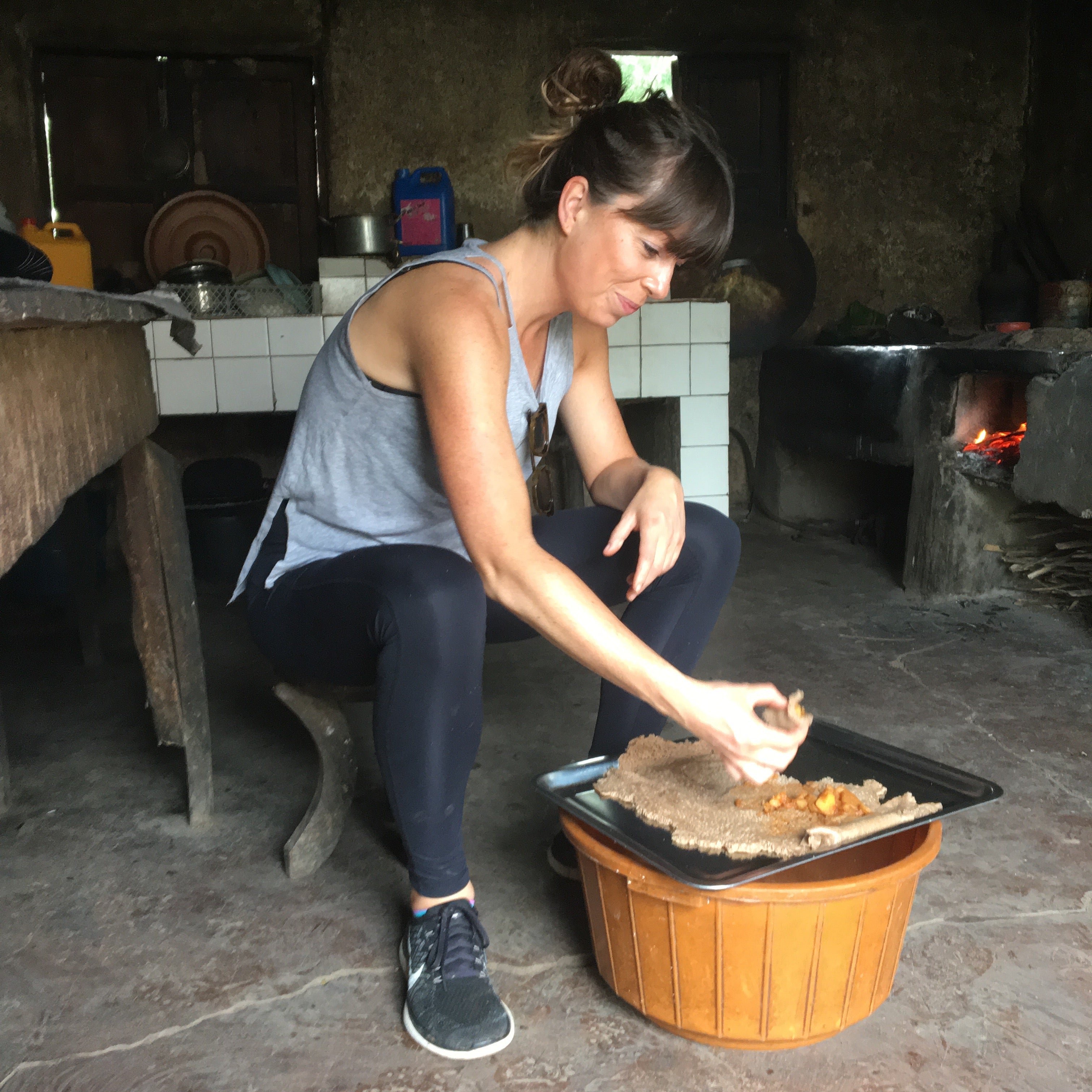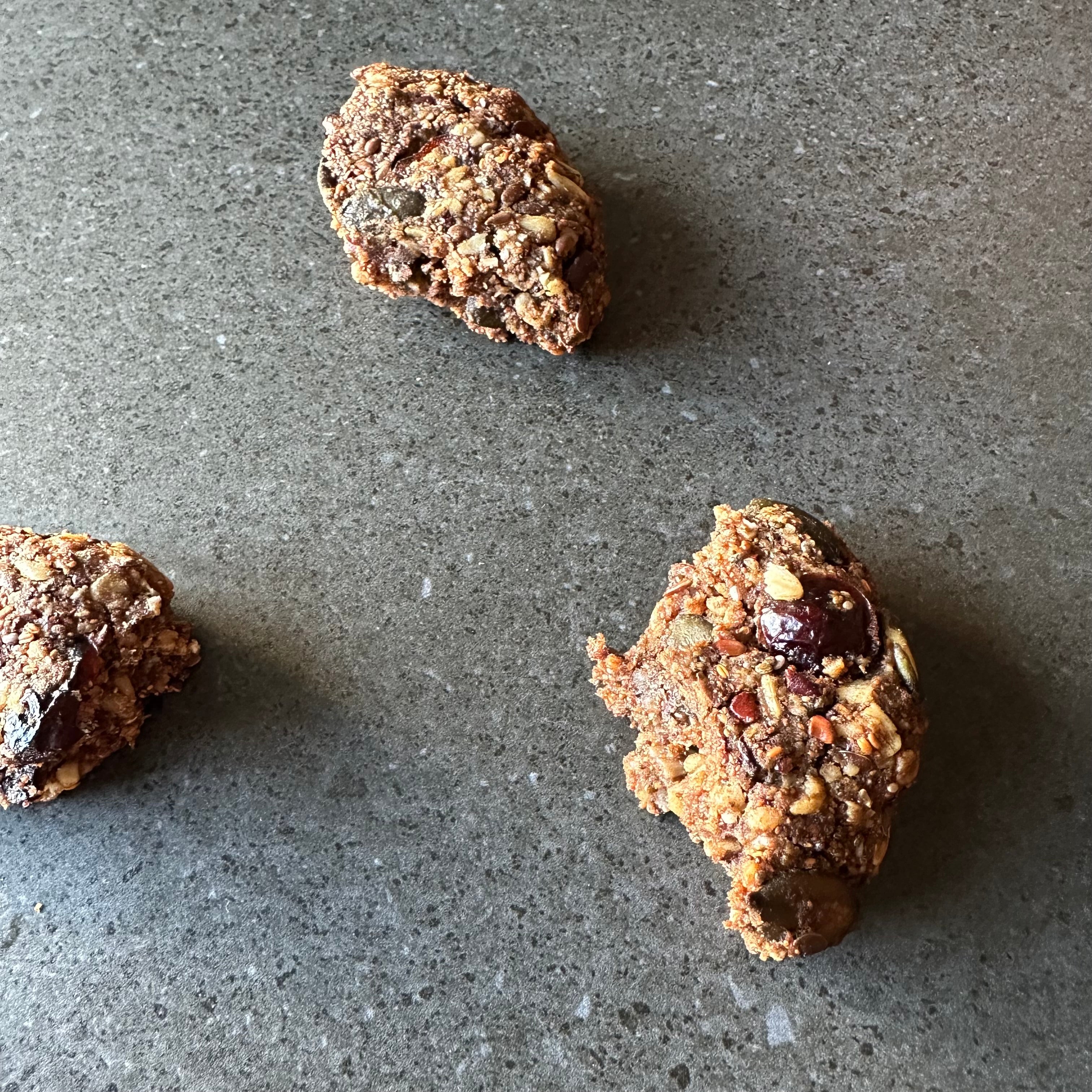Feeling peeved off with your energy levels and endurance levels when active? Want to be able to perform at peak for longer? You might really need to look at your iron absorption. Particularly if you're plant-based.
Research indicates that in the UK an average female consumes 10.0 mg of iron a day which is significantly lower than recommended nutrient intake (RNI) of 14.8 mg/day.
Iron is an essential mineral for optimal physical performance. It plays a role in oxygen transport and energy production and serves as a functional component of haemoglobin and myoglobin. Iron plays a crucial part in the electron transport system during the production of ATP, hence, providing an energy source for physical movement.
In order for metabolism and oxygen transfer to take place efficiently during physical performance, there must be an adequate level of iron in the human body.
Dietary iron occurs in two forms: haem and non-haem.
- The haem form of iron refers to iron from animal sources.
- Non-haem iron accounts for all other types of dietary iron.
Non-haem iron is bound to other food components and therefore non-haem iron absorption depends on the levels of inhibitors and enhancers in our food.
In Western diets 50% of total dietary iron comes from grain products, hence, non-haem iron accounts for the largest proportion of iron intake for the general population.
Teff contains five times the amount of iron there is in wheat. Teff also has five times less the amount of phytic acid there is in wheat. Phytic acid is an inhibitor to iron absorption. The iron in Teff can be better absorbed than the iron in wheat due to Teff’s low amount of Phytic acid.
Furthermore, through the fermentation of Teff the amount of phytic acid in the grain decreases making the iron in Teff even more bioavailable.


Cereal products, in particular bread, are the main contributors to the mean proportional iron intake in the general female population as well as the female athlete population when compared to any other food groups. Cereals and cereal products, account for 31% of daily iron intake with bread at 19%.
Researchers at Manchester University have done many studies on the impact a low iron diet has on one’s health, in particular the muscles of recreational runners and people who like high intensity workouts.

Iron deficiency takes from your performance. Eating Teff is what boosts the performance of Ethiopian Athletes and is the reason so many Ethiopian runners out-perform runners from the rest of the world.

Prolonged and intense aerobic exercise causes muscle damage followed by an inflammatory response that initiates the repair of damaged muscle tissues. Among the many biochemical changes that occur in the inflammatory state is an increased production of a protein called hepcidin, a regulator of iron metabolism.
When hepcidin levels are high, dietary iron absorption in the intestine is impaired. Although research has shown that hepcidin levels are not chronically elevated in endurance athletes, the transient spikes in this protein that follow each workout appear to be sufficient to lower total iron absorption and cause clinical iron deficiency in many athletes.
Therefore, Researchers at Manchester University proposed that the incorporation of iron-rich Teff bread into a daily diet of female athletes may be one of the ways to improve their haematological indices and possibly aid their sport and exercise performance.
A loaf of bread that is 30% Teff Flour contains more than twice the amount of iron compared to wheat bread. Furthermore, as mentioned above, fermentation during the bread making process is reported to enhance bioavailability of iron further. Ramachandran and Bolodia (1984) demonstrated that the fermentation of Teff increased the dialysable part of iron from 9% to 24%, hence, increasing bioavailability of iron in food. A similar trend was also observed in another study where fermentation of Teff has resulted in a decrease in phytic acid content, a known inhibitor of non-haem iron absorption, by 72%!!! (Urga et al., 1997).

During the study by the Researchers at the University of Manchester it was discovered that consumption of 200g of 30% Teff bread can provide up to around 40% and 50% of the protein requirements for males and females, respectively. Teff bread can also provide 50% of recommended fibre intake and over 75% of the Reference Nutrient Intake (RNI) of iron for adult females. Hence, the consumption of Teff bread will particularly allow consumers to increase their intake of iron as well as provide adequate amounts of protein, fat, fibre and antioxidants to the body.
In a study of British runners, only 36% of runners reached the estimated average requirement of 11.4mg/day, with 18% of them falling below the lower reference nutrient intake (LRNI) which is similar to the levels (21%) in general female population.
Further investigations were completed to explore the associations between Teff consumption, body iron status and sports performance in female adult subjects, who are habitually engaged in exercise activity, particularly running.
These results suggest that female runners would benefit from education on the importance of achieving optimum nutrition, in particular, the adequate intake of complex carbohydrates and iron.
In the study 20-50% of female runners had marginal iron deficiency, which is more than twice that of the general population!
The dietary intervention part of the study successfully incorporated Teff bread into the daily diets of female runners. As a result of this, habitual iron intake was significantly increased. Teff bread contributed to 38% of total dietary iron intake throughout the intervention.
The female runners significantly improved their gas exchange parameters at anaerobic threshold point and time-to-exhaustion. There was also an increase in maximal oxygen uptake at peak performance. Further to this, the improvements in anaerobic threshold parameters were positively correlated with enlarged overall iron stores, whilst endurance performance was linked to the improved iron tissue supply.
The findings from the intervention study show that Teff could be incorporated into an individual’s diet in order to increase one’s habitual iron intake. This would particularly benefit individuals with already compromised iron status. Improvements in iron status may also improve endurance sport and exercise performance.
Time-to-exhaustion is a frequently used measure for endurance performance. In a study, Athletes were asked to perform to exhaustion at specific sub-maximal exercise intensities until they were not able to maintain the required speed or power (Newton et al., 2008). Time-to-exhaustion was part of a progressive exercise testing protocol where the exercise intensity is incremental under specific time sets; hence the workload was not kept constant. The results from the study show that time-to-exhaustion significantly increased during the Teff Bread intervention period and Athletes maintained endurance activity for significantly longer periods of time. An incremental change of 25% was recorded.
In summary, the findings from the Teff Bread Intervention study indicate positive relationships between dietary iron intervention and sports performance results.
...................................................................................................
Further Reading and discoveries….
It was also discovered that the runners’ diets provided inadequate amounts of carbohydrate, whilst their intake of total fat, saturated fat and NMES (non-milk extrinsic sugars) were above the national recommendations. Most of the micronutrient intakes were observed to be above reference nutrient intake (RNI), with the exception of Vitamin A and iron.
The medium bioavailability diet in the Manchester trial contained only one third the amount of meat compared to the high bioavailability diet, the breads were made from wholegrain flour and some of the lunch and dinner meals were vegetarian, which resulted in a higher level of phytate (iron absorption inhibitor).
Another study also demonstrated that a much lesser fraction of non-haem iron (iron from non animal products) was absorbed in the diet compared to haem iron (animal sourced iron). The difference was 5% vs 37% which suggests that diets rich in plant materials and lower in meat may be inadequate to supply dietary iron even if the total amount represents recommended values.
Overall, research indicates that the amount of dietary iron, the type of iron (haem vs nonhaem) and the presence of enhancers or/and inhibitors in the diet affect the bioavailability and absorption of iron. Hence, it appears that the larger the amount of dietary iron consumed, and the greater the proportion of this iron being in the haem form together with the greater proportion of dietary enhancers in the diet would result in greater iron absorption.
However, with so many people choosing a plant based diet nowadays for legitimate health reasons and for overall better gut health it is important to make the grains we eat really count. It’s also important to be mindful of iron absorption inhibitors such as phytic acid for those of us who do eat plant-based diets based on the previous study mentioned.
To conclude…
The importance of dietary intervention to improve iron status of female distance runners is highlighted by several researchers (Beard and Tobin 2000; Burke et al., 2007), and yet most iron intervention studies employ pharmacological iron supplementation strategies.
The most important contributors to the total iron intake in general female population were reported to be cereals and cereal products, accounting for 31% of daily iron, in particular bread at 19%. The present study showed that Teff bread contributed to 38% of daily dietary iron during the intervention. Taken into account the current dietary guidelines on increasing consumption of cereals, fruit and vegetables (Department of Health 2011); and the importance of cereal products in providing large proportion of daily iron, it seems that encouraging female athletes and the general female population to increase cereal and cereal product consumption is justifiable. Particularly those products higher in iron and low in phytic acid.
Sports nutrition advice on iron is to obtain it through the diet.
And we've got just the product for you!
A fermented Teff loaf high in iron, dietary fibre, protein and antioxidants for your gut health and sports performance!
We believe in functional based eating that rids the need for supplements. And at times when you don't know what's best for you and your gut allow us to step in and guide you.

Big Love, Your Lovegrass (Teff) Dealer,
Karen xx



